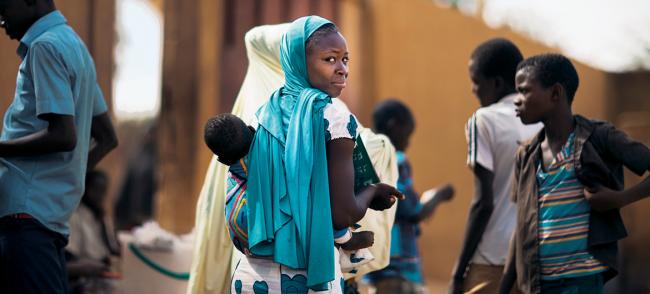
World population set to grow another 2.2 billion by 2050: UN survey
New York, Oct 18 (IBNS): The world’s population is set to grow by 2.2 billion between now and 2050, the UN said on Wednesday, and more than half of that growth - 1.3 billion - is likely to be in sub-Saharan Africa, where women’s rights are hampered by limited access to healthcare and education, along with “entrenched gender discrimination”.
Monica Ferro, Director of the UN Population Fund (UNFPA) in Geneva, said the trend globally is towards smaller families, indicating that more people are making choices about exactly how many children they want, or can afford to raise.
Despite the gradual transition to lower fertility rates, which began in Europe in the late 19th century, no country can claim that all their citizens enjoy reproductive rights at all times, Ms Ferro told journalists at a press briefing. “No matter if it is a high fertility-rate country or low fertility-rate country, in both of them, you will find individuals and couples who say they don’t have the number of children they want. They either have too many or too few.”
In 43 countries, women have more than 4 children
According to UNFPA’s State of World Population 2018, there are 43 countries where women have more than four or more children, and 38 of these are in Africa.
In all but five East African countries, fewer than half of all women surveyed, said they would prefer not to have any more children.
If UNFPA’s predictions are correct, Africa’s share of the world population will grow from 17 per cent in 2017, to 26 per cent in 2050.
Staying with the African continent, fertility rates are “significantly lower” in cities than in rural areas, the report indicates. In Ethiopia, for example, women have around 2.1 children in cities, whereas they have around five in the rest of the country.
Bigger families in conflict zones
Underlining the link between conflict and insecurity with bigger families, the UNFPA data also shows that Afghanistan, Iraq, Palestine, Timor-Leste and Yemen have higher fertility rates than the overall average of 2.5 children per woman.
The UNFPA official urged all countries to implement a range of policies and programmes that would increase the “reproductive choices” of their populations.
Prioritizing quality maternal healthcare for all is key, according to the UN report, which highlights the need for access to modern contraceptives, better sex education, and an emphasis on changing male stereotyping of women.“In developing countries, 671 million women have chosen to use modern contraception,” Ferro said. “But at the same time, we know that 250 million in the developing world want to control their fertility, and lack access to modern contraceptive methods.”
Couples who want to have more children should also be helped to do so, Ferro said, explaining that economic barriers which preventing this from happening could be better addressed, through measures such as affordable child care.
France and Norway had seen their birth rates pick up after taking such steps in recent decades, the UNFPA official said.
Nonetheless, many developing countries lack the resources or political security they require to improve reproductive health and rights for all.
They “are struggling hard to meet the demand for education, the demand for jobs, the demand for even having healthcare services that are accessible to everyone,” Ferro said. “What the report tries to show is that in these countries, the unmet need for family planning is typically very high.”
Reproductive rights have improved ‘substantially’
In the nearly 25 years since the landmark International Conference on Population and Development was endorsed by 179 Governments, people’s reproductive rights have “substantially improved around the world”, Ms Ferro said.
She noted that States agreed then that it was important for couples and individuals to decide the number, spacing and timing of their children, and that such decisions were made free from discrimination, coercion or violence.
A similar commitment is reflected in the Sustainable Development Goals agenda, agreed by the international community in 2015.
Nonetheless, hundreds of thousands of women continue to suffer from the failure to implement this programme of action, the UNFPA official insisted.
“Every year, 300,000 women die during pregnancy or childbirth because they have no choices in maternal healthcare; every day, thousands of girls are forced into child and early marriage and are victims of female genital mutilation. They have no choices.”
UNFPA/Ollivier Girard
Support Our Journalism
We cannot do without you.. your contribution supports unbiased journalism
IBNS is not driven by any ism- not wokeism, not racism, not skewed secularism, not hyper right-wing or left liberal ideals, nor by any hardline religious beliefs or hyper nationalism. We want to serve you good old objective news, as they are. We do not judge or preach. We let people decide for themselves. We only try to present factual and well-sourced news.







